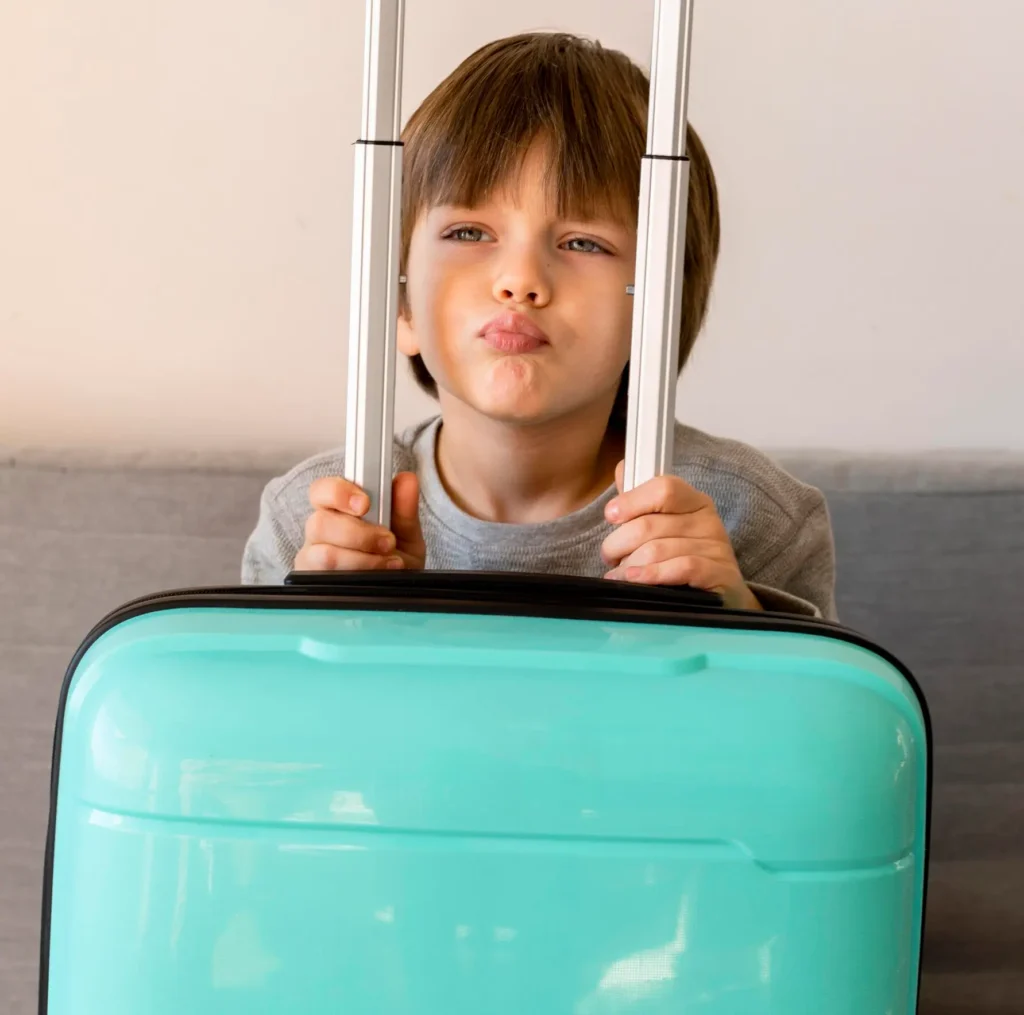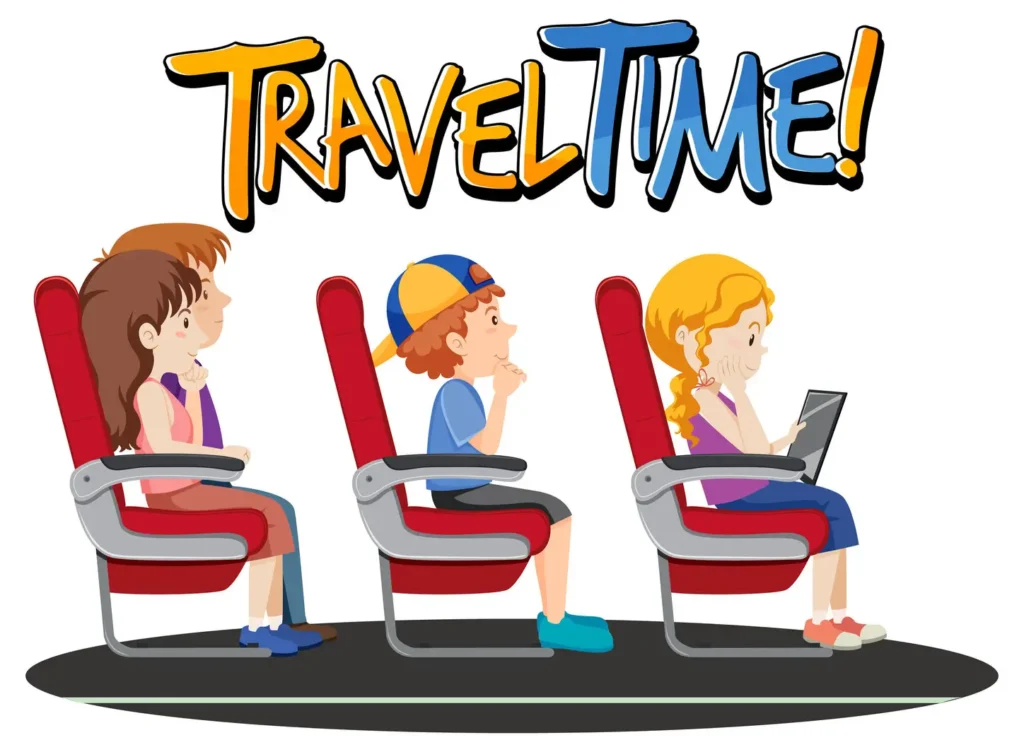Infants and jet lag can look dramatic on paper and surprisingly manageable in real life with a simple plan. Time zone changes nudge tiny body clocks out of sync. Calm steps bring them back. A few days of steady cues, sunlight timing, and gentle routines often do the heavy lifting. With infants and jet lag, small consistent moves beat complicated hacks every time.
What Infants and Jet Lag Looks Like
Infants and jet lag show a few classic signs: early morning parties, wide-awake nights, and naps landing at odd times. The body wants local daylight cues, but hormones still follow departure time. Short-term irritability is common; big changes settle as the rhythm resets. A repeatable routine sets expectations for the next few days and keeps infants and jet lag from derailing the whole trip.
Body clock basics for jet lag in babies
The internal clock takes cues from light, meals, and quiet contact. When time jumps, nights can feel like midday. That’s jet lag in babies in one line: mixed signals. The fix stays gentle control light, protect naps, and keep bedtime steps predictable. Sunlight timing acts as a reliable anchor for infants and jet lag.
Common patterns worth expecting
Split nights. Short naps. Catnaps right before bedtime. A safe wind-down, a quiet room, and consistent steps usually shorten the adjustment. The baby jet lag phase often eases within three to five days, especially when infant and jet lag cues stay steady.

Pre-Flight Prep that Eases Infant Jet Lag
Infants and jet lag improve when the plan starts before takeoff. Two or three days of small nudges soften the shock and trim jet lag infants symptoms on arrival.
Small schedule nudges and light timing
Shift bedtime by 15–30 minutes toward destination time across a day or two. Eastbound moves earlier; westbound moves later. Morning light at the destination hour and dim light before bed keep infant jet lag shorter. These modest steps cut the chance of jet lag waking up at 3am.
Nap windows and feeding rhythm
Protect core naps in the days before travel. A regular feeding rhythm helps digestion settle once wheels touch down. This rhythm matters for infants and jet lag, since hunger can masquerade as wired energy at 2 a.m. Keeping one predictable anchor nap can tame jet lag in babies faster.
Smart packing essentials items for babies on board
A focused kit beats a heavy bag. Extras: sleepsuits, swaddles or sleep sacks used at home, a compact white-noise source, and a thin dark cover for the bassinet area (airline permitting). These items for babies on board reduce stimulation and make the sleep space feel familiar. Add saline spray, spare pacifiers, and a light blanket that doubles as a shade of simple comforts that smooth infant air travel tips in practice.
On the Plane Infant Air Travel Tips
Infants and jet lag start improving the moment the cabin routine feels familiar.

Calm comfort setup tips for infants on planes
Layered clothing, familiar sleep cues, and a steady feed-play-settle pattern work well. Hydration and small, frequent feeds help in dry cabin air. These tips for infants on planes align with practical infant air travel tips that favor rhythm over novelty. Keeping stimulation low helps jet lag infants arrive less overtired.
Seating, bassinets, and tips for flying with an infant on lap
A lap ticket keeps logistics simple. Bulkhead rows may allow bassinets on long-hauls; check early. Gate-checking a compact stroller smooths connections. Common tips for flying with an infant on lap include early boarding, aisle-side storage for a go-bag, and quick-reach wipes. When seats allow, a window spot can limit distractions, easing infants and jet lag on landing.
Special notes for flying with an 8 month old
Mobility brings curiosity. For flying with an 8 month old, plan quiet play: soft books, teething toys, and brief aisle walks when permitted. A window seat reduces foot-traffic wakeups. Short floor-time stretches at the gate keep energy in check before boarding, supporting baby jet lag recovery later.
Arrival Plan for Infants and Jet Lag
Infants and jet lag meet their match in light timing, regular meals, and a predictable bedtime routine.
Day-one sunlight and a simple anchor
Bright morning light, outside if possible, moves the clock faster than any gadget. Aim for active daylight hours and dim, quiet evenings. This single anchor shrinks infant jet lag quickly. Gentle outdoor time also helps toddler jet lag if a sibling is along.
Handling jet lag waking up at 3am
If jet lag waking up at 3am strikes, keep lights low and voices soft. Offer a calm feed if hunger signs show, then back to bed with familiar cues. Skip long play; quiet holds beat party mode at that hour. A steady response shortens jet lag in babies over the next two nights.
Soothing jet lag baby crying at night
Jet lag baby crying at night often signals a body clock arguing with the clock on the wall. A short reset helps: brief cuddle, gentle shush, and the usual sleep space. If tummy discomfort joins in, a quick burp break can help before settling again. This pared-down approach keeps infants and jet lag from becoming a prolonged cycle.
Symptoms of Infant Jet Lag
A clear picture makes faster fixes. Common symptoms of infant jet lag include:
- Early morning waking, sometimes classic jet lag waking up at 3am
- Split nights with long, playful stretches
- Short fragmented naps that drift later
- Extra crankiness near bedtime
- Digestive timing that feels off after long flights
- More frequent settling protests or jet lag baby crying at night
Spotting these signs early helps tailor infant jet lag steps and prevents baby jet lag from snowballing.
How to Help Your Baby Adjust
A few anchors guide infants and jet lag back to local time.
Light: bright mornings; low light for the last hour before bed.
Naps: two or three solid rest periods, capping the last one so bedtime stays on target.
Meals: a regular pattern that matches the local clock within 24–48 hours.
Routine: bath, lotion, feed, story, and bed the same flow that works at home.
For toddler jet lag, add morning sunlight walks and a slightly earlier bedtime for two nights. These repeatable moves bring jet lag infants in line with new daylight quickly, and they pair well with in-flight infant air travel tips already used an route.
Full Focus Section How to Help Your Baby Adjust with Infants and Jet Lag
Building a simple day plan keeps infants and jet lag predictable:
- Morning: sunlight within an hour of local wake time; outdoor pram time if weather allows.
- Midday: one anchor nap near local noon to stabilize infant jet lag.
- Afternoon: fresh air and movement; cap the last nap.
- Evening: quiet play, warm bath, familiar lotion scent, and lights down routine that reduces jet lag baby crying at night.
- Night: if jet lag waking up at 3am repeats, keep the response brief and boring.
With flying with an 8 month old, add more floor time after arrival to drain energy without overstimulation. The same rhythm supports baby jet lag recovery and prevents overtired spirals.
Sample 3-Day Reset for Infants and Jet Lag
Day 1 (arrival day). Daylight soon after arrival. One core nap near local midday. Quiet evening. Bedtime close to target time, even if a touch early.
Night 1. If wakeups happen, keep the room dim. Short feed if hungry, then back down. Infants and jet lag often protest here; calm consistency wins.
Day 2. Morning light again. Keep naps on local time. Outdoor time in the afternoon fights the slump. Keep the pre-bed routine short and familiar to trim infant jet lag.
Night 2. Expect improvement. If jet lag waking up at 3am repeats, shorten the response window and keep stimulation low.
Day 3. Lock in local wake time. Protect naps, but cap the last one to protect bedtime. The baby jet lag phase usually fades by now for most families crossing a few time zones. If toddler jet lag lingers, extend outdoor morning time and keep bedtime firm.
Extra Notes with a Dash of Humor
Search quirks pop up during planning:
- Jet lag companies might refer to gadgets or apps; the most dependable tools here are light, naps, and routine.
- Jet baby shows up in memes; the plan still favors calm steps and a dark room.
- A cheeky phrase like when you’re a jet belongs to pop culture; circadian clocks still answer to sunrise and bedtime, not theme songs.
Troubleshooting Corner for Infants and Jet Lag
Infants and jet lag sometimes morph into split nights after long eastbound routes. A short mid-afternoon nap plus a slightly later bedtime on day two can help. If naps refuse to line up, hold the wake window steady and shorten the pre-bed routine to get sleep started. Digestive timing can trail by a day; warm baths and calm feeds usually reduce discomfort. Screen-time for older siblings can stay flexible during travel, keeping toddler jet lag from spilling into everyone’s night.
If congestion or ear pressure appears after landing, a quick call to a clinician is wise. Meanwhile, humidified air and extra fluids can ease rest and stop jet lag baby crying at night from noise-related wakeups.
Expertise and Extra Help for Infants and Jet Lag
For trips across many time zones or repeated long-hauls, professional guidance can speed results. A pediatric-trained sleep coach or clinician can review plans for infants and jet lag, adjust nap caps, and refine light timing. Expert review often trims infant jet lag by syncing sunlight, meal timing, and routine with specific routes. This kind of targeted plan helps with flying with an 8 month old, supports siblings with toddler jet lag, and reduces chances of jet lag waking up at 3am sticking around.
FAQs
Does travel direction change how infants and jet lag feels
Ans: Yes. Eastbound shifts often trigger earlier wakes; westbound shifts stretch bedtime. Plan light exposure to match the new morning for infants and jet lag.
How many time zones make baby jet lag more likely
Ans: Three or more. Bigger jumps mean stronger cues are needed to steady baby jet lag.
Should naps be limited on the plane to reduce infant jet lag
Ans: No hard cap. Protect one decent rest, then keep the last nap short so infant jet lag settles faster after landing.
Best layover length to reduce jet lag in babies
Ans: About 90–150 minutes. Enough time for a calm feed and stretch without tipping into overtired jet lag in babies.
Can cabin light settings help jet lag infants during night flights
Ans: Yes. Dim overheads and a dark cover over the bassinet area help jet lag infants arrive less wired.
Are bassinets worth requesting for tips for infants on planes
Ans: Yes. Hands-free rest improves settling. Combine with gentle routine and core tips for infants on planes.
Which seats help most for tips for flying with an infant on lap
Ans: Window pairs. Fewer passersby and easier shade control support tips for flying with an infant on lap.
What extra items for babies on board help at the gate
Ans: Thin blackout cover, spare sleepsuit, and a small fan. These items for babies on board keep the sleep space cool and dim.
What’s different about flying with an 8 month old during connections
Ans: More movement breaks. Floor time near the gate trims restlessness, easing flying with an 8 month old and later sleep.
Can a brief morning walk curb toddler jet lag on multi-city trips
Ans: Often. Early sunlight plus steady meals align toddler jet lag with the local clock.
Why is jet lag waking up at 3am so common after eastbound flights
Ans: The circadian low lands too early. Low light and a short feed nudge jet lag waking up at 3am toward morning.
Quick reset for jet lag baby crying at night after a red-eye
Ans: Dim room, short cuddle, brief feed if hungry, then back down. This calms jet lag baby crying at night without starting a new habit.
Do airline programs or a jet lag company app replace sunlight cues
Ans: No. Tools may help planning, but daylight remains the primary reset for infants and jet lag.
Why does jet baby show up in searches and does it change the plan
Ans: It’s casual slang. The plan stays the same: steady routine, light timing, and calm nights for baby jet lag.
Is when you’re a jet relevant to sleep planning
Ans: No. It’s pop culture; circadian clocks still answer to the local light key for infant jet lag.

Conclusion
Infants and jet lag improve fastest with bright mornings, quiet evenings, and familiar steps. A small pre-flight plan, a calm cabin setup, and a steady post-landing routine build momentum. Most trips see infant jet lag fade within a few days, especially when tips for infants on planes, simple items for babies on board, and repeatable bedtime steps stay in play. Consistent cues finish the job and keep baby jet lag from returning on the trip home.


